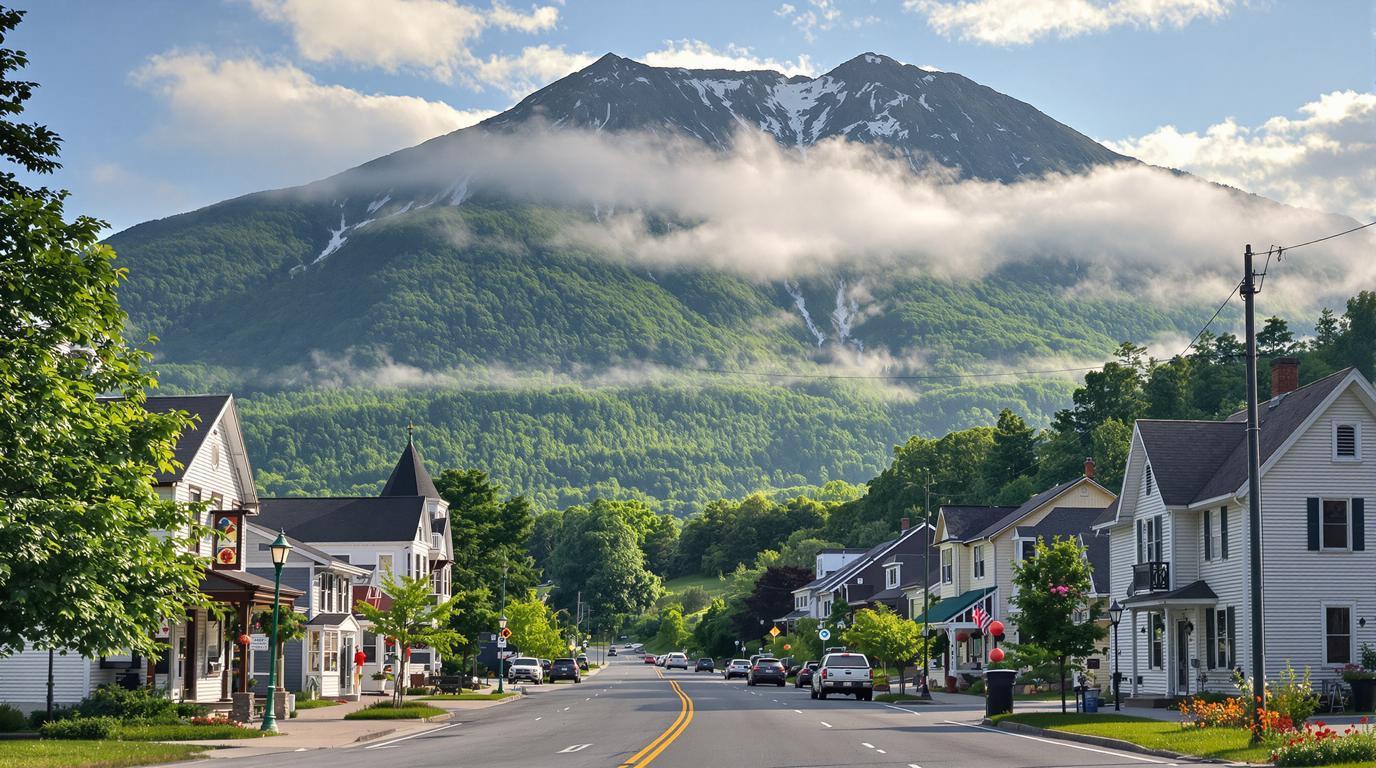The morning mist clings to Haystack Mountain’s 3,445-foot summit as I drive through Wilmington’s quiet main street, where 2,294 residents guard one of Vermont’s best-kept secrets. While summer crowds flood Stowe’s commercialized slopes just 90 miles north, this Green Mountain sanctuary maintains its authentic character at 1,581 feet elevation. The thermometer reads a perfect 75°F in July—a refreshing escape from the valley heat that draws those in the know to this unpretentious mountain town.
After fifteen years of exploring Vermont’s hidden corners, I’ve discovered that Wilmington represents everything mass tourism threatens to destroy. No designer boutiques line its streets, no celebrity chefs command $200 dinners, just genuine New England mountain life preserved in amber.
The town’s median household income of $80,000 reflects hardworking locals who’ve chosen authenticity over commerce, creating an atmosphere you’ll never find in Vermont’s tourist magnets.
The Green Mountain refuge that summer heat can’t touch
Why elevation creates the perfect mountain microclimate
Wilmington’s strategic position at 1,581 feet above sea level creates a natural air conditioning system that sophisticated travelers have quietly discovered. While Boston swelters at 85°F, this mountain town maintains comfortable 75°F temperatures through July and August, with cool evenings that drop into the 60s. The surrounding peaks, including nearby Haystack Mountain reaching 3,445 feet, funnel cool air through the valley, creating microclimates that locals have learned to read like a weather map.
The summer sanctuary locals protect from crowds
Unlike Stowe’s packed Main Street or Woodstock’s tour bus parade, Wilmington’s summer reveals itself slowly to those who take time to notice. Local families still gather at pristine swimming holes along the Deerfield River, where granite pools carved by centuries of snowmelt provide natural refrigeration even during peak summer heat. The town’s 88.7% white demographic reflects New England’s traditional mountain communities, where families have farmed these slopes for generations.
Hidden authenticity that defies mass tourism
The architectural secrets commercialized towns abandoned
Walking Wilmington’s back streets reveals the Vermont that existed before tourism marketing departments repackaged mountain culture. Original clapboard farmhouses wear weathered cedar shingles, their foundations built from local fieldstone that early settlers pulled from these same mountainsides. No designer “rustic chic” here—just honest craftsmanship that’s survived two centuries of Green Mountain winters.
Traditional mountain culture visitors rarely experience
The median age of 57.3 years tells Wilmington’s real story: this is where Vermont’s mountain wisdom lives. Local farmers still predict weather by reading cloud formations over Haystack Mountain, and neighbors gather at the general store to debate snow conditions months before the first flakes fall. These conversations happen naturally when you’re not competing with selfie-stick wielding tourists for sidewalk space.
Travel Note: “After documenting mountain towns across three continents, I’ve learned that authentic culture survives only where locals outnumber visitors. Wilmington’s 2,294 residents have mastered this balance, creating genuine experiences that feel earned rather than purchased.”
The exclusive mountain experience tourists never discover
Secret trails that bypass crowded destinations
While Stowe’s gondola lines stretch for hours, Wilmington offers direct access to unmarked trails that locals use to reach Haystack Mountain’s summit. The trailhead begins just outside town, winding through old-growth forest where you might hike for hours without encountering another soul. These paths connect to the Green Mountain National Forest’s backcountry, offering wilderness experiences that commercial ski resorts can’t replicate.
Local knowledge that transforms ordinary visits
The town’s proximity to Haystack Pond at 2,984 feet elevation creates opportunities for high-altitude fishing that few visitors discover. Local guides—often third-generation mountain residents—know exactly where brook trout hide during summer heat, sharing knowledge passed down through families rather than printed in guidebooks. This insider access transforms a simple mountain visit into authentic Vermont experiences that money can’t buy in touristy destinations.
Frequently Asked Questions
How does Wilmington’s summer weather compare to other Vermont destinations?
Wilmington’s 1,581-foot elevation creates consistently cooler temperatures than valley towns, typically running 5-10 degrees below places like Brattleboro while avoiding the overcrowded conditions of higher-elevation Stowe.
What makes this town more authentic than commercialized Vermont destinations?
With only 2,294 residents and a median age of 57.3 years, Wilmington maintains genuine mountain culture where locals still outnumber tourists, preserving traditions that commercialized towns have abandoned for mass appeal.
When is the best time to visit for mountain weather without crowds?
July through early September offers perfect 75°F weather with minimal tourist traffic, especially compared to fall foliage season when even authentic towns face visitor pressure.
How do I access the unmarked trails locals use?
Connect with longtime residents at the general store or local diner—they’ll direct you to Haystack Mountain trailheads that bypass crowded recreational areas, offering genuine wilderness experiences.
Wilmington’s 2,294 residents have preserved something precious: a mountain town where summer means 75°F refuge, authentic culture, and experiences that can’t be purchased or replicated. While commercialized destinations chase tourist dollars, this Green Mountain sanctuary proves that Vermont’s most valuable treasures remain hidden in plain sight, waiting for travelers who value authenticity over amenities.
